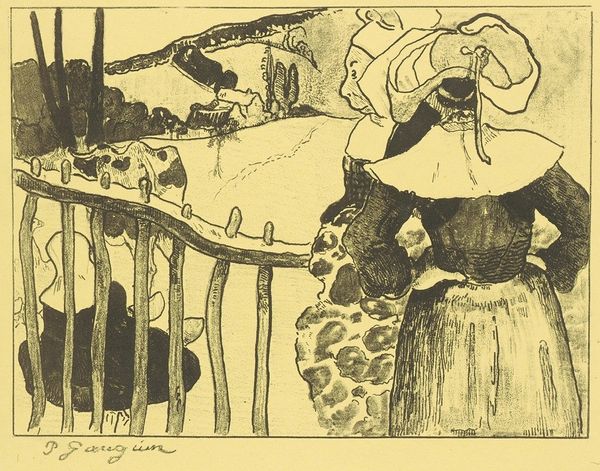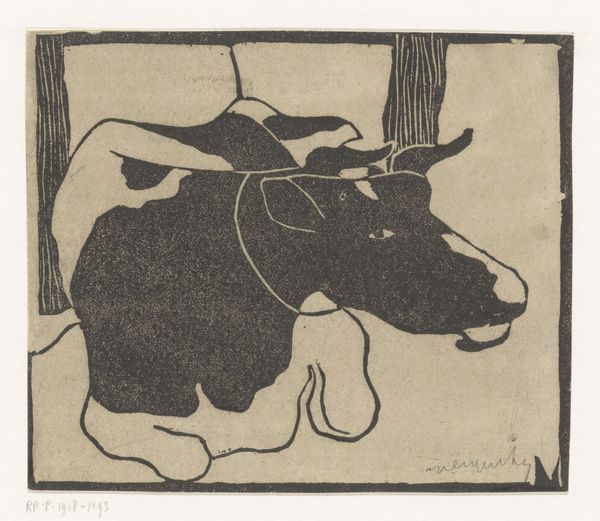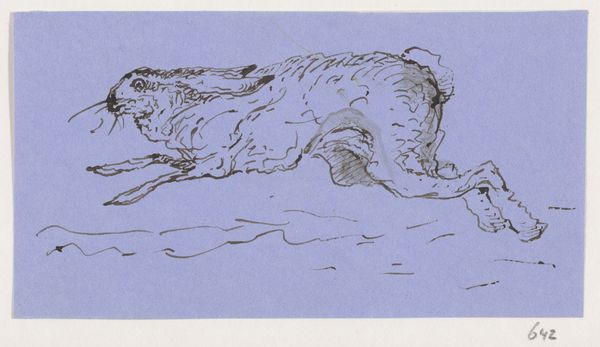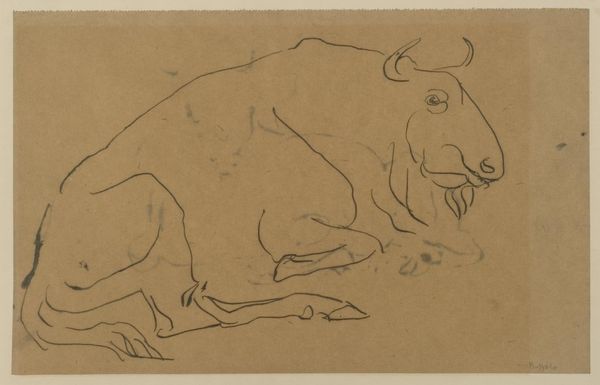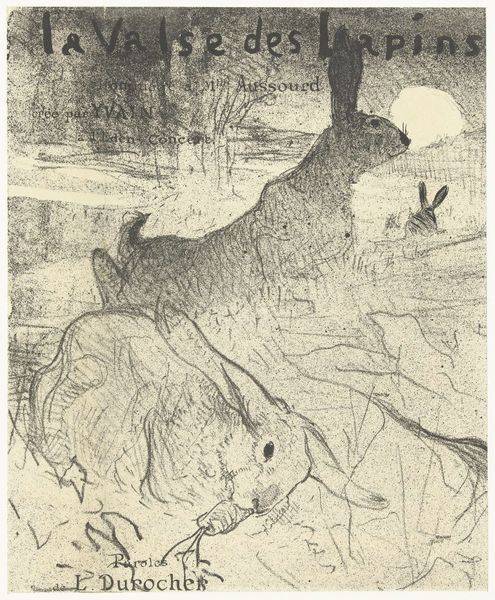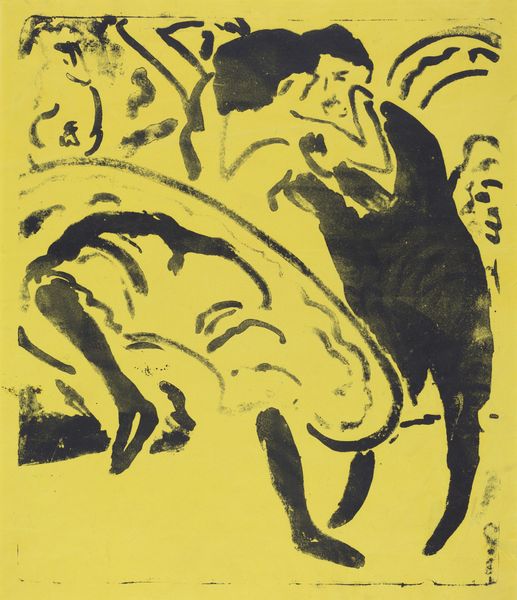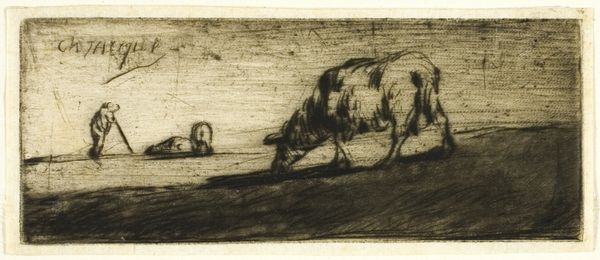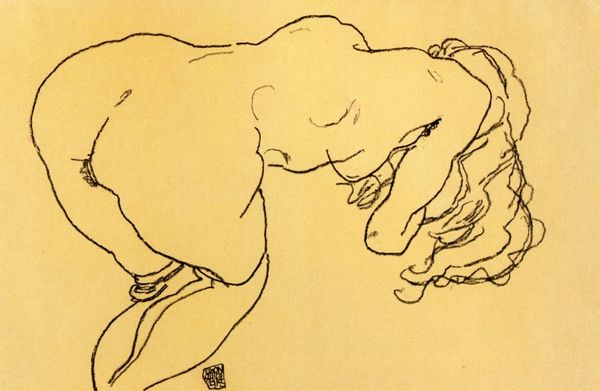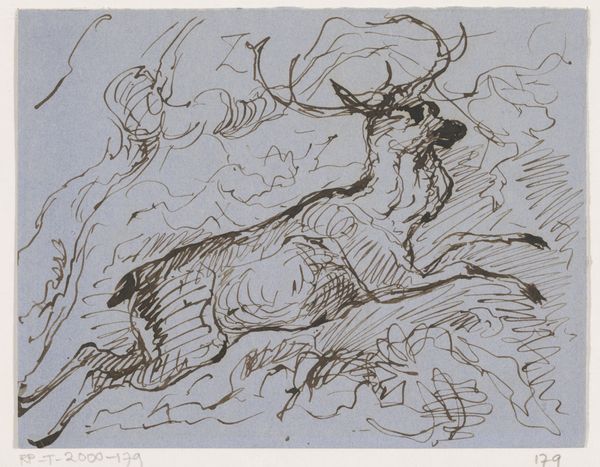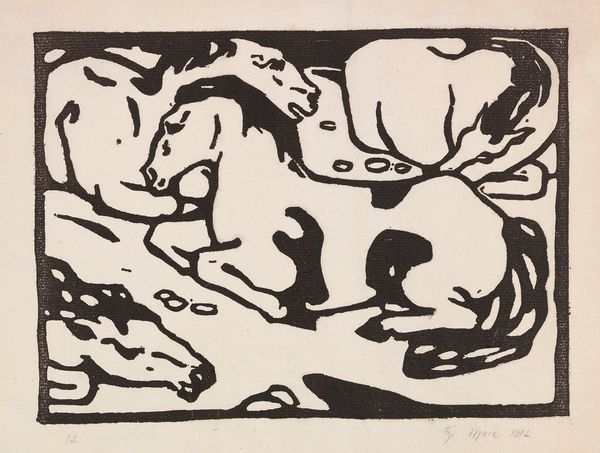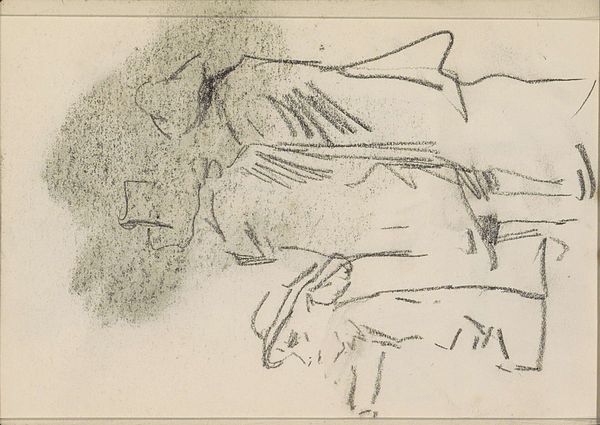
Washerwomen, from the Volpini Suite: Dessins lithographiques 1889
0:00
0:00
drawing, lithograph, print, ink
#
drawing
#
ink drawing
#
lithograph
# print
#
impressionism
#
human-figures
#
landscape
#
ink
#
genre-painting
#
post-impressionism
Dimensions: Image: 8 3/16 x 10 1/4in. (20.8 x 26.1cm) Mount: 13 7/16in. (34.2cm)
Copyright: Public Domain
Editor: This is Paul Gauguin's "Washerwomen, from the Volpini Suite: Dessins lithographiques," made in 1889. It’s an ink lithograph, and it strikes me as portraying labor with a certain heaviness and stoicism. What layers of interpretation do you find here? Curator: That's a great initial reading. Gauguin, in this print, part of a larger suite, presents us with what seems like a straightforward genre scene: women at work. However, within the context of late 19th-century France, this image touches on several key social and political issues. Consider the backbreaking labor typically relegated to working-class women. Does Gauguin critique this reality, or does he exoticize it? Editor: That's a good point. The women are central, yet they almost blend into the landscape, their individual struggles somewhat obscured. Was Gauguin, even subconsciously, making a statement about the plight of working women in French society? Curator: Exactly. The aesthetic flattening he employs – a characteristic of Post-Impressionism drawing influence from Japanese prints, but here perhaps unconsciously informed by Symbolism – may also flatten the complexities of the women's lived experiences, essentializing them. How much is he truly seeing these women, and how much is he projecting his own artistic agenda? Editor: I see. It's not just a picture of washerwomen; it’s about questioning whose perspective we’re seeing them through, and what that tells us about the artist and society at the time. Curator: Precisely. It makes us consider the power dynamics inherent in representation. Even an image that appears simple can be deeply entangled with socio-political narratives related to labor, gender, and class. What you initially saw as 'heaviness' can be understood as a powerful weight of these forces at play. Editor: This conversation really shifted my view! I initially saw the aesthetic, now I see how the context gives the image its true weight. Curator: And that is what makes engaging with art so enriching; art and its relationship to culture is perpetually revealing and transformative.
Comments
No comments
Be the first to comment and join the conversation on the ultimate creative platform.
